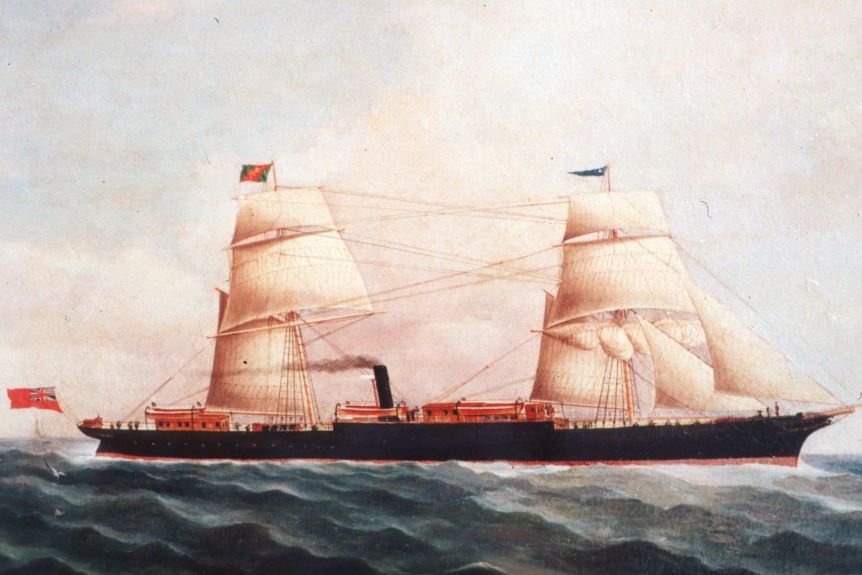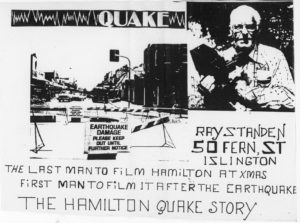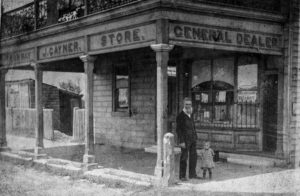The SS Brisbane was a passenger, cargo and mail ship, built by A&J Inglis of Glasgow and launched in 1874. It was owned by the Eastern & Australian Mail Steamship Co Ltd, which had a contract to carry mail between Queensland and Singapore, to connect with the P&O mail service from England.
On 10 October 1881 it ran aground on Fish Reef near Quail Island, not far from Darwin, while on its way from Hong Kong. No lives were lost, but the ship was a wreck. The wreck remains today as a historic site.
This account, from the handwritten logbook of seaman Robert Huddle, describes first-hand the maiden voyage of the Brisbane from Scotland to Australia, via Singapore and Hong Kong. Huddle got the job through his contacts at the Cunard Line, where he had previously worked. He was aboard the Brisbane for its maiden journey in 1874, and stayed aboard for as well as for some of the ship’s subsequent voyages until mid-1875. Of the ship Huddle wrote: “In the RMS Brisbane it will be seen I travelled over a wide area, and perhaps more than in any other vessel I had served in did I experience such kaleidoscopic changes far exceeding any during my career up to that date”.
What follows below are selected excerpts transcribed from Robert Huddle’s log-book.
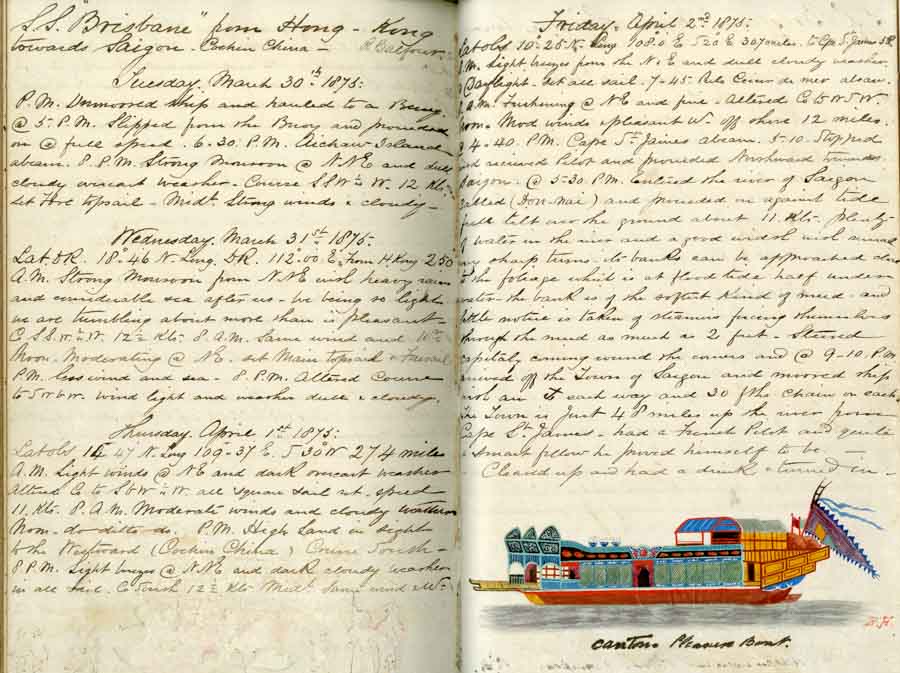
Joined the Eastern and Australian Company’s new steamship Brisbane on the 28th day of September 1874 while under the builders’ hands at the Pointhouse shipbuilding yard, Glasgow. The Brisbane is a vessel of 280 feet in length and 32 feet beam and propelled by engines 240 horsepower, compound. She is a handsome model and elaborately fitted up, well ventilated and with every convenience that climate and experience could suggest. She is built and designed expressly to run the Queensland Mail between that colony and Singapore and is under contract with the colonial government to carry on that service for the term of three years. How far successful the undertaking will prove only remains now to be seen. We left the builder’s premises on the 6th of October to run the measured mile which we did in 4:20 at Wemyss Bay.
Returned to Glasgow on the 8th and underwent some further alterations by way of improvements and received the ship in the care of ourselves on the 9th of October, since which time have been busy preparing her for sea. Shipped a native crew and made the best use of them we could during intervals of sunshine; the climate around Glasgow playing the very devil with them. They all more or less suffer bronchial afflictions. On the 22nd of October finally left the Clyde and proceeded down the river and came to an anchor off Helensburgh for the night in order to wait for ship’s papers. Today being last day here, there is no business done at the custom house. Friday the 23rd, got upstream about noon and discovered a small defect in the machinery which had to be replaced with a new piece from town. This delay kept us till Saturday morning, daylight the 24th, when we finally weighed anchor and proceeded to sea, bidding a fond farewell to the Hills of Bonny Scotland.
They Brisbane had plenty of wind and rain as it steamed south-west, until off Cape Finisterre (Spain) on October 28 Huddle wrote of “variable light airs and calms and bright balmy weather – one breath of which would do one more good than all the medicines in all the doctors’ shops in London”. The Brisbane steamed into the Mediterranean, passing Pantelleria Island on November 2 and Malta on November 3. On November 6 they took a pilot aboard and anchored at Port Said where they took on water and 400 tons of coal.
Sunday November 8th 1874 fine calm cheerful weather. At 7am hove up the anchor and proceeded to the canal in charge of pilot. Commenced operations at once with the steam pump and endeavoured to put a new Phace (face) on matters for we were as black as it is possible to imagine. Forenoon – steaming cautiously along the canal with a companion close on our heels. Saw nothing very exciting. Certainly were I to forget the skill displayed by our staff of officers, myself included, I should be doing an injustice to the art of musketry – to wit we were surprised while at dinner that there were a number of eagles airing themselves on the banks of the canal. We at once made a rush to the rack that contained our firearms (not even fascination of a good plum pudding and other luxuries could keep us at the table) and coolly and deliberately poised ourselves, rifles in hand, ready to knock the whole of them over. There were eight birds and four rifles pointed at them. The whole space they covered would be about the size of a large dinner table. Now would you believe it; off went the rifles and off went the birds and to me it appeared that the only safe spot around the locality was precisely where the birds stood, so I shall conclude my remarks simply by saying we were out of practice. Perhaps we’ll do better tomorrow. At 3pm arrived at Ismailia and anchored for the night, it being too late to get farther on today. Towards sundown had a glorious swim in the lake and enjoyed it immensely. 8pm set anchor watch. The P&O steamer has arrived here with the eastern and China mails this evening and proceeds on tomorrow, so my letters I am glad to know will soon be on the way home if they are not already gone by the Brindisia route.
In the Suez Canal
Monday November 9 1874: Daylight 6am. Weighed anchor and proceeded the canal towards Suez. At 9am had to anchor for an hour in the Bitter Lake in order to allow two other ships to pass us coming in the opposite direction. At 10am hove anchor again and proceeded and arrived at Suez 3:13pm. Discharged pilot and proceeded on at full speed. Have had a beautiful day and enjoyed it so much that I could not but think what a glorious way it is to rounding the Cape – or as sailors say doubling the Cape. There is no doubt about our doubling it in real earnest and I think it a fine sure. 3.30pm Suez Bay light ship abeam. 7.20pm Lafarana light abeam. 8pm calm and still. Weather still very hot.
Tuesday November 10, 1874. 240 miles from Suez. Light airs and calms. Land on both sides distinctly visible. Courses various. Smooth water. Noon: calm and very hot. Spread all awnings. I cannot but compare the change of climate I enjoy now to that which is to be experienced at this time of year in the Atlantic trade; poor Devils.
By Friday, November 13, they were close to the mouth of the Red Sea, passing the Hanish Islands, where Huddle reported the “ship pitching heavily”.
Monday, November 15. Everything very still and quiet around and scarcely a sound to be heard but the continual and satisfactory thud of the engines which are going beautifully.
The ship made its way across to the Dutch East Indies and on November 26 was passing the northern end of Sumatra. Saw two Dutch men of war, ships of the Dutch fleet at anchor in the bay off Achien Head. Presume they are watching the movements of the enemy,the Achinese, with whom they are engaged in war.
By Sunday, November 29 they were safely at anchor in Singapore Harbour.
The arrival of the Brisbane in Singapore has created quite a stir amongst the few Europeans here all of whom are more or less directly interested in the services of the mail steamers running from here to the colonies of which the Brisbane is the pioneer. Apart from her connections with the port she attracts attention through her own special merits as regards a compact and neat ship. Fittings and equipments are complete and she is considered quite an acquisition to the company who owns her. Monday the 30th November: Went into dry dock – the usual process for a new ship to go through – and we unfortunately discovered that two of the blades of our propeller were cracked so we were compelled to ship a new propeller which we fortunately brought out with us. Discharged the whole of our outward cargo while in the dry dock and took in the greater part of the Hong Kong cargo also. We were seven days in the dry dock and I must add that the delay was owing to the want of energy or ability on the part of the dock officials who all appeared to leave the work in the hands of the natives and to strut about and air themselves with their hands in their pockets and cigars in their mouths. It may easily be inferred how slow they were in replacing the propeller when I say they were five days transporting the new one about 150 yards and putting it into the dock ready for placing when the old one came off. Floated out of the drydocks Sunday evening 9pm and hauled to Tanjong Pagar wharf. Monday and Tuesday filling up and preparing for sea. Wednesday received on board 180 (Chinamen) passengers, one small bag of mails, and at 11:30 proceeded to sea.
Wednesday December 9th 1874: 11:30am cast off moorings and proceeded to sea. Noon, discharged pilot, proceeeded full speed
The weather between Singapore and Hong Kong was fairly heavy, and Huddle observed that the ship was often taking a lot of water over the bows. Two passengers died on the short trip, one of the Chinese, and one European. Both were buried at sea.
The residents of Hong Kong
The general aspect of the island of Hong Kong in its first appearance to me reminds me much of the island or rock of Gibraltar from the position in which the town is situated on the island from the sea where from the seashore to about 1/3 its slope up the hill – and occupying as it does only the one side of the island. The hills all around us are pretty lofty and devoid of anything like cultivation or even vegetation and one would think from their general appearance that there are or have been considerable volcanic eruptions but I believe there are no active volcanoes at all in China. The climate around Hong Kong appears to vary much from heat to cold. We have experienced a temperature of 70 degrees one day and the next it would be 45 or 50 and the same may be said between the nights and days. One night you may sleep comfortably between the blankets and the next you would have to lay outside them to be comfortable so that colds are frequent and a general complaint of the changes of temperature the usual salutes of the day. The people themselves in their physiognomy and general appearance show signs of Mongoloid origin along with some features peculiar to themselves. Their eyes are long and oblique and their colour a pale yellow. Their hair is plaited into a tail reaching from the crown of the head to the waist, the rest of the scalp being closely shaven. They all appear to be pretty well dressed and as far as I am able to judge there does not seem to be much poverty or wretchedness among them. They seem to be a very jealous disposition and their whole system of life seems to be reduced to an endless routine of work and sleeping and eating and the best good quality is an unremitting industry. Go when you will night or day you will always meet more of them hard at work – late and early. They never appeared tired and will do more work in half the time than any of the Asiatic races I have met with. They, however, show many vices of weak and degraded minds. From the well-to-do tradesman to the poorest peasant an utter disregard of truth prevails and their unrivalled skill in the art of cheating is beyond comparison. The women are small and not at all bad looking. The great ornament to the fair sex is a small foot. Some of the ladies have them cased or wrapped up from a very early age in order to ensure a neat foot. The men are very expert at ivory carving and as copyists in painting I think they’re very clever. They certainly have not much creative genius in them but give them a subject to copy and you can get the reproduction perfect. I have a photo of my dear mother copied and painted on ivory and it is perfect lifelike to the minutest detail. The same would not be done at home for less than £5 and I get it here for £1.
New Year’s Day at sea
Friday January 1st 1875: Wind blowing a good stiff breeze at north-east under all square sails to topgallant sails and travelling along about 13 knots. The day throughout being no more observed than usual although there are a number of our staff Scotsmen they do not appear to be very enthusiastic or nervy on the occasion and all that I see unusual is a little more liquor around than usual. I must not forget to note that I have done full justice to the many absent friends I have in my mind by wishing them all a happy new year and I daresay I shall be for night join in a song to the memory of all. Anyway I shall go at once and give them all a bumper in a Brandy and soda. I dare say when these lines meet the eye of an outsider he will say that fellow who wrote this must be a toper.

Friday January 22nd 1875: Calm with heavy rain showers. 3:30am, saw the land – Rocky Island and Prince of Wales Island. Stopped at once and anchored in 10 fathoms of water. 5:30am, first daylight, hove up anchor and proceeded through the Prince of Wales channel at 9am. Cape York abeam half a mile. This is the most northernmost point of Australia. Ship proceeding cautiously and at 10am off Somerset and anchored in 11 fathoms of water. The spot called Somerset is a small Bay with plenty of water in it and consists of about 14 Europeans occupying four homes and all the surroundings are a barren wild, its only importance being its refuge for the pearl fishers and its situation as regards navigating the land straits, whereby it becomes a haven for shipwrecked crews when they would avoid being eaten alive by the natives inhabiting the York Peninsula. Noon, received mails. 1pm hove up the anchor and proceeded southward along the land. Captain Peak (pilot on board). Weather very hot and sea beautifully smooth, courses various and speed 10 and-a-half knots. Numerous islands on the port hand and sandbanks which are well-marked. The mainland on the starboard hand 3 miles. 4pm, Cairncross Island abeam quarter of a mile. 9pm, Cape Grenville abeam. Courses various with occasional stoppages for soundings. At 11pm came to an anchor in 14 fathoms of water with 40 fathoms of chain on the port bower. Moon obscured with heavy cloud making the horizon very dark and murky. The numerous small islands and the beacons very indistinct. The sea very smooth; having no expanse there is no chance for the sea to rise.
Saturday January 23rd 1875: Light breezes from southeast with rain showers. Had a fishing line over all the time we were got anchor but not a nibble rewarded my troubles. 5am, hove up the anchor and proceeded southerly at full speed. Good daylight and courses various. Passed through several narrow channels and have the dry sandbanks and coral reefs on the port hand and the mainland and numerous islands on starboard hand. At noon Bright Island abeam and Number Eight Island one mile off. By appearances it looks as though we should have to anchor again tonight as it is very thick during the squalls. The islands are mostly all numbered in station: these are so numerous that I expect the folk were hard up for a name for each of them. They are small and insignificant as a rule, very little patches but with verdure of every variety and hue of colour.
One of the Chinaman stewards being very unwell this morning he was asked by the surgeon of the ship what was the matter. His reply was so rich and rare that I cannot forebear to make a note of it. The Chinaman could speak English. The following is his description of his indisposition: “Head too much sore. This mouth no can go. This foot no can go. This night no can sleep. Today too much hot. One day more can make finish and me go sky-side”.
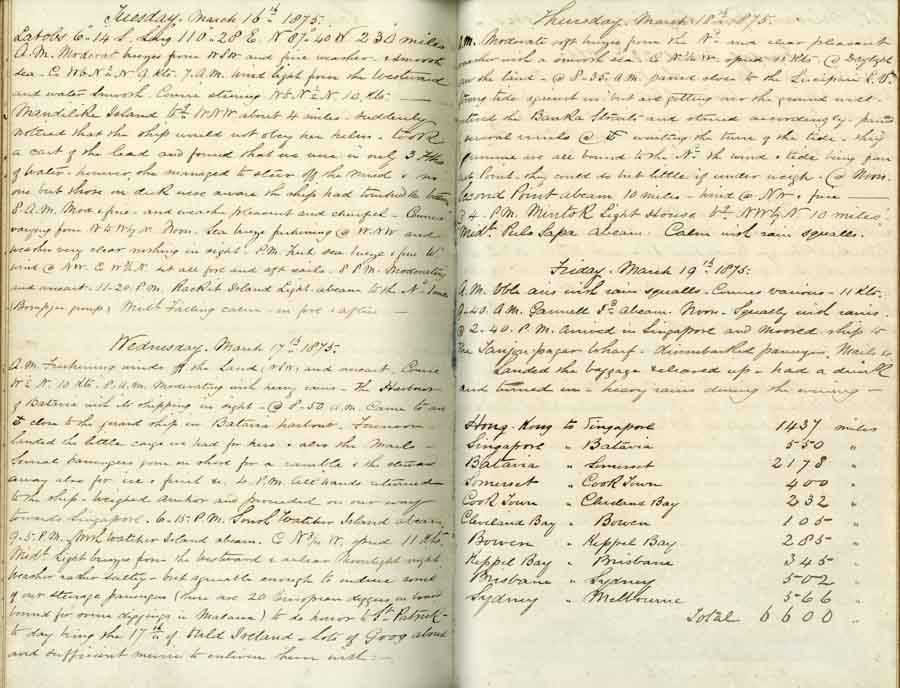
On January 26 the ship arrived at Townsville where it discharged 200 Chinese passengers, some freight and mail, and left the same day. On January 29 the Brisbane anchored in Moreton Bay where the crew amused themselves by catching sharks. Huddle called it “the most uninteresting spot I have seen during the whole trip”. Next day a tender arrived with mail and passengers from Brisbane and the ship headed south again, passing Nobbys lighthouse at Newcastle at 8.25pm on January 31.
Monday, February 1, 1875: 2.30am, made Sydney Head light, steered for it and at 3.50am entered Sydney Harbour and anchored off Millers Point at 4.30. At daylight hove up and hauled alongside the wharf and moored ship. Landed mails and passengers and commenced discharging cargo. The Brisbane left Sydney on February 2 and headed south and was in Melbourne by the 4th.
The return voyage to Asia began on February 10, with the first stop Sydney where six horses were taken aboard, bound for Singapore. On February 26 Huddle wrote: “8pm blowing a strong gale from the eastward with a high sea. Ship tumbling about very much; the poor horses suffering much”.
Saturday, February 27, 1875: 2am, Point Stephens light abeam. 4am very heavy gale from ENE with high sea – ship taking heavy seas on board breaking up horse boxes, stoving in boats, washing the greater part of our livestock overboard and doing considerable damage to the woodwork of the ship. 8am continued heavy gales and high sea. Two of the horses dead; put them over the side.
Brisbane was reached on March 1 and March 2 was spent repairing storm damage. The ship headed off again and reached Batavia on March 17, Singapore on March 19, Hong Kong on March 29 and Saigon on April 2.
Huddle left the Brisbane when it arrived back at Singapore on April 29 and the ship kept going back to Australia. It isn’t clear why he left: perhaps he had a dispute with the captain of the Brisbane. At any rate, he took a much lower paying job on the Singapore-based steamer Medina, on which he was to experience shipwreck.
His parting words on his long voyage on the Brisbane follow:
The mail steamer route
There is no doubt that the establishment and maintenance of a line of mail steamers from Singapore to the Australian colonies is a matter of considerable importance to eastern Australia and I presume of no little consequence to Singapore and a review of the route taken by the steamers will probably be of interest to the readers. The Brisbane then left Sydney at 5pm on the 26th of February and arrived at Brisbane at 11am March the 1st. During this part of the passage there was a considerable sea with a high wind, doubtless the relics of easterly and south-easterly gales that had been blowing for some time. The result was that we lost two horses that we had on deck through the exposure to wind and sea and that most of ladies – and indeed a number of the stronger sex -were unable to appear at table, I presume through having a disagreeable taste in their mouths. At Brisbane we remained according to the terms of our contract with the Queensland government until Wednesday morning, the 3rd of March at 7am when we got under weigh and proceeded on our journey northward. At 0.30pm on the 4th of March arrived in Keppel Bay, took on board the mails and at 1:30pm same day proceeded on. On the 5th of March we rounded Cape Gloucester at noon and at 1:30pm anchored off the town of Bowen, after a beautiful mornings sail through the Whitsunday Passage and amongst the numerous groups of picturesque islands that are thickly scattered off this portion of the coast. We got away from Port Denison (Bowen) at 4pm and arrived in Cleveland Bay at 1am on the 6th, where we were compelled to anchor until daylight owing to the darkness of the night – it raining heavily with thunder and lightning. We did not expect to have much communication with the townspeople until daylight. At daylight received mails and got under weigh. In the forenoon of the same day we passed Hinchinbrook Island, the magnificent outlines of which – though partially obscured by mist and cloud – was still most beautiful.
At 3am on the 7th passed Cape Bedford and at 8:30am Cape Direction was abeam. Continued on all night, and all eyes looking for known and supposed dangers. At 3am on the 8th passed the Bird Rocks. At 9am passed through the Albany Pass and returned to anchor in the Bay of Somerset at 9:30. Here we landed mails and passengers for the pearl fisheries here. Somerset is rather a pretty spot and at first sight gives one the impression of being a very pleasant place to live in – as no doubt it would be if it were not quite so much out of the world. At 3pm on the 8th got under weigh again and proceeded on our way. At 9:20pm same evening passed Booby Island and entered on the Arafura Sea where we were out of sight of land until the 12th when we passed the island of island of Timor. The whole passage from Cleveland Bay to Booby Island was through a track studded with a succession of magnificent views like those of an exquisite panorama, to do justice to whose beauty would require an abler pen than mine. Since getting among the islands on the west side of the Arafura sea we had seen a few native prahus and catamarans but no signs of life on shore except the smoke from a few fires apparently lighted as signals. Up to this point most of the islands we passed were of volcanic origin and of the most rugged and inhospitable character. From this to Singapore the land grew gradually more and more fertile and cultivatable. Low-lying comparatively flat islands with luxuriant foliage took the place of mountains with broken and distorted sides boasting of little or no vegetation beyond sombre forests and with the hungry soil blistering under the rays of a tropical sun. On the 17th of March anchored in Batavia Roads, landed mails. At 4pm weighed anchor again and proceeded northward. Passed through Banka and Rhio Straits and on the 19th at 3pm was moored fast to the Tanjong Pagar Wharf, after making the run from Brisbane in three days less than contract time.
The Brisbane continued to run between Australia and Asian ports until it was wrecked near Darwin in 1881. The wreck is nowadays considered a historic site.

